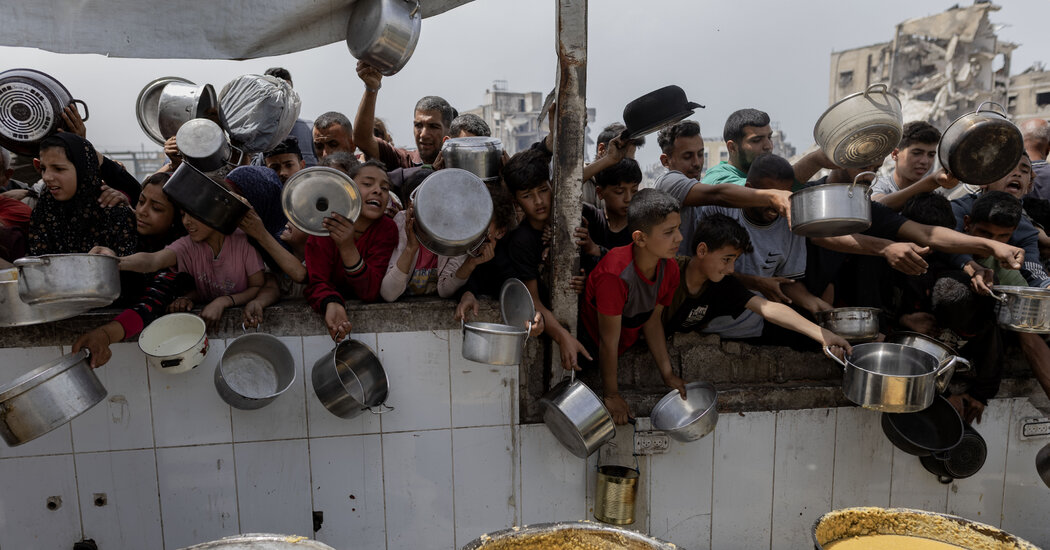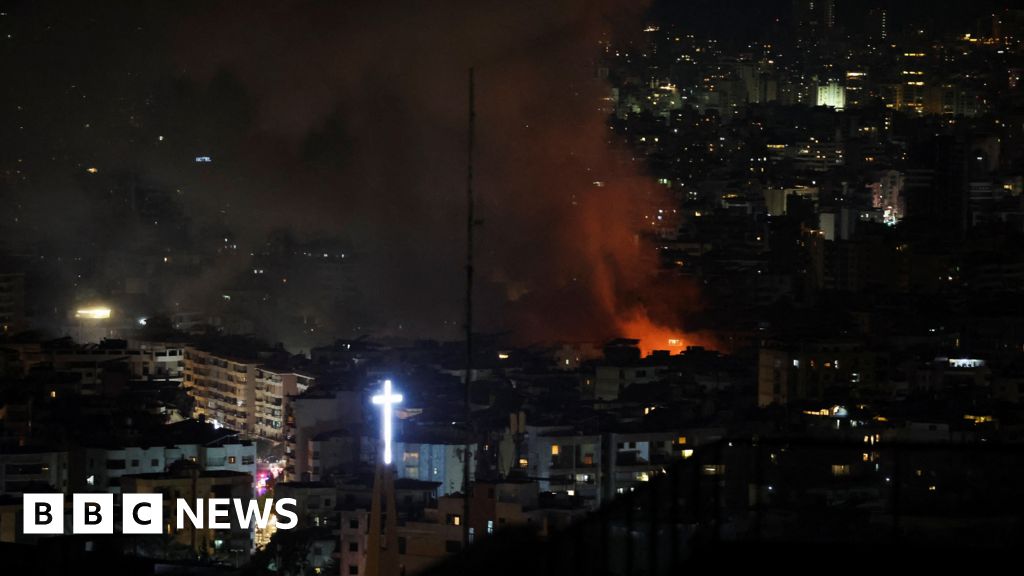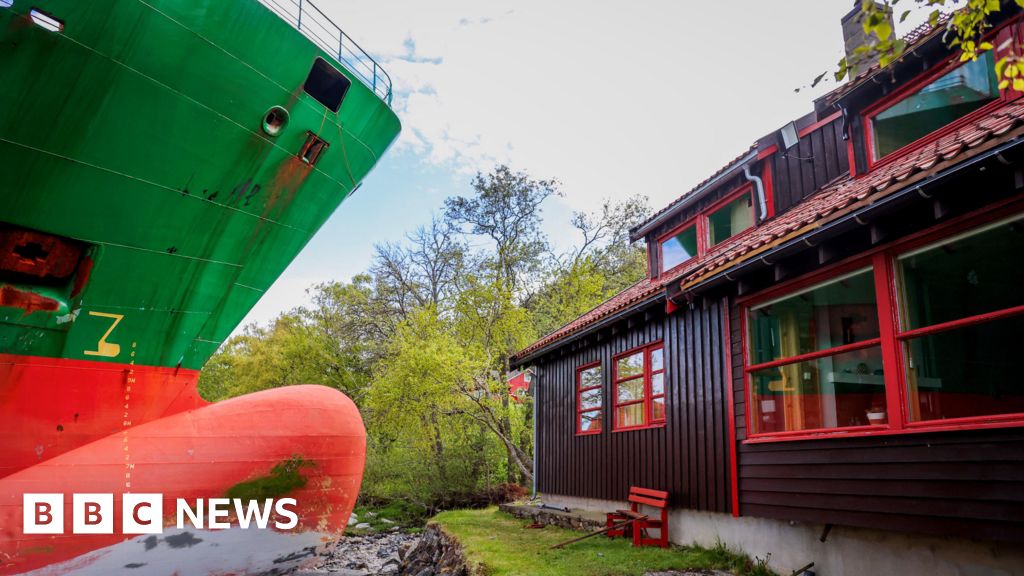The Trump administration is working with the Israeli government on a plan to deliver humanitarian aid to Gaza and end Israel’s two-month blockade on food and fuel deliveries, according to the State Department. Aid workers have raised serious doubts about the approach.
The mechanism has yet to be finalized, but the general idea is to establish a handful of distribution zones that would each serve food to several hundred thousand Palestinians, according to two Israeli officials and a U.N. diplomat. They spoke on the condition of anonymity to discuss the proposal, and The New York Times also reviewed briefing papers that detail the proposal and confirmed their authenticity with diplomats and officials.
The Israeli military would be stationed beyond the sites’ perimeters, allowing aid workers to distribute the food without the direct involvement of the soldiers, the officials and the briefing papers said.
The plan marks the first time that the Trump administration has been drawn into such detailed discussions about aid delivery in the Gaza Strip. Mr. Trump is considering announcing the plan in the coming days, before a trip to the Middle East, an Israeli and a U.S. official said.
Israel and the United States say a new system is needed to prevent Hamas from stealing food supplies and profiting from them. By severing Hamas’s influence over aid, they hope to undermine the group’s wider influence over the Palestinian population, perhaps weakening its grip on power.
But the plan’s feasibility remains unclear. While any resumption of food deliveries would help address rising hunger in Gaza, the project has been criticized by aid agencies. The United Nations said it had too many reservations to participate.
In a briefing paper distributed to partners including U.N. member states and other aid agencies this week, the U.N. office for the coordination of humanitarian affairs said the proposal would force vulnerable civilians to walk longer distances to get to the few distribution hubs, making it harder to get food to those who need it most.
Under the current system, the U.N. said, there are 400 distribution points. The new one, it said, “drastically reduces this operational reach, raising the prospects that large segments of the population would be left without food and other essential supplies.”
At a media briefing on Friday, Mike Huckabee, the U.S. ambassador to Israel, said the criticism was “not accurate,” adding that “there will not be that long a distance to get to the distribution points.” The ambassador also said more distribution points would be built in the future, making it easier for civilians to access them.
The Israeli prime minister’s office and the White House declined to comment.
It is still unclear which aid groups will take part. Mr. Huckabee said several private organizations would be involved. At a media briefing on Thursday, Tammy Bruce, a State Department spokeswoman, said the aid would be distributed by a single private foundation, but declined to elaborate further.
According to two Israeli officials and a person involved in the initiative, that foundation is the Gaza Humanitarian Foundation, a new private group founded for this purpose. A briefing paper issued in the name of the group and seen by The Times said it would provide a “functioning humanitarian lifeline in Gaza that mitigates suffering, upholds international humanitarian law, and demonstrates a scalable model for aid delivery in complex environments.”
But the U.N. and others expressed concern at that the plan would force civilians to regularly interact with Israeli soldiers, putting them at greater risk of detention and interrogation. And the U.N. briefing paper said that the project could be a backhanded means of forcibly displacing civilians in northern Gaza; citing Israeli officials, the U.N. said the aid sites would likely be built in southern Gaza, forcing civilians to abandon the north to gain access to food.
Aid workers also warned that the new system may make civilians who live far from the distribution points more vulnerable to looters and thieves, since they will be forced to walk long distances with valuable food parcels.
The proposal does “not look like a plan for aid distribution so much as a tool for further pressure, to ensure that life is unlivable in Gaza,” said Tania Hary, executive director of Gisha, an Israeli rights organization that advocates for Palestinian civilians in Gaza.
Mr. Huckabee acknowledged the new system would face challenges, at least initially, but said it was better to try a new system than to allow Hamas to influence aid distribution.
“Let’s be real clear what the danger is,” Mr. Huckabee said. “The danger is not doing anything.”
Absent an end to the blockade, the risk of famine is expected to grow. The fuel embargo has made it almost impossible to distribute food to certain parts of Gaza, or to power bakeries, forcing many to close.
As a result, hunger has already spiraled and food costs have soared. In late April, the World Food Program said its food supplies had run out, while the U.N. agency that aids Palestinian refugees, UNRWA, said it had no more flour. Israel says there are enough supplies in Gaza and that it is necessary to freeze aid to prevent it from reaching Hamas.
According to civilians interviewed by The Times, the cost of flour has risen 60-fold since late February, Looting has become rife as civilians become more desperate.
Isabel Kershner, Adam Rasgon and Johnatan Reiss contributed reporting.



